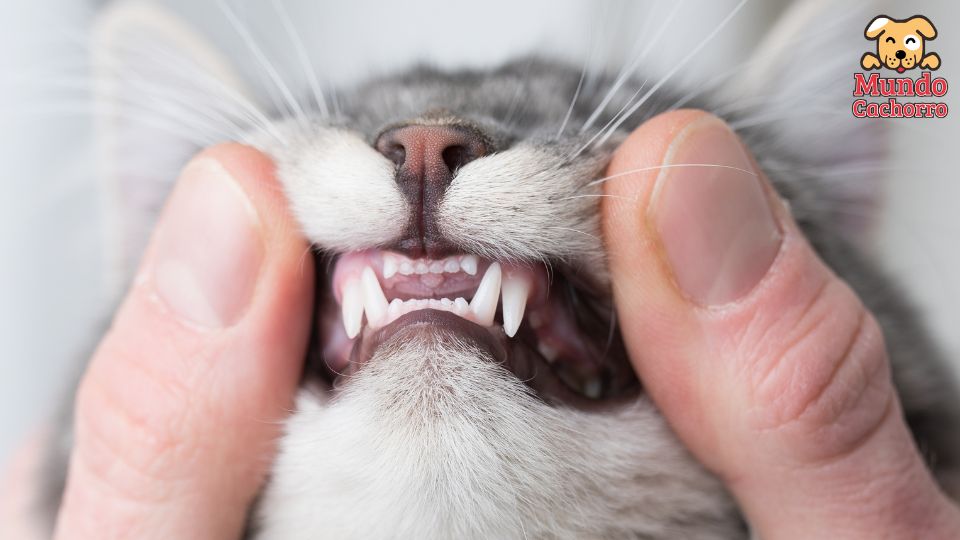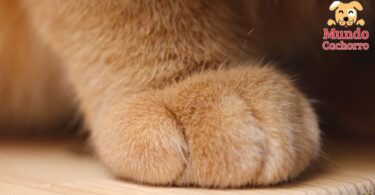When we think of cats, it is easy to forget that these felines go through a molting process, similar to that experienced by humans. This process is a natural part of a cat’s growth, but is not always widely known among pet owners. Understanding how and when cat shedding occurs will allow you to take better care of your feline companion during this crucial stage of his development.
In this article, we explain everything you need to know about cat shedding, from when it starts to how to manage any symptoms that may arise.
Indice
1. When do cats begin to molt their teeth?
Cats begin to molt their milk teeth between 3 and 4 months of age. This process, known as molting, is an important milestone in a cat’s development as the permanent teeth begin to replace the primary or baby teeth.
Baby teeth are small and sharp, designed to help the kitten begin to eat solid food. During this period, you will notice that your cat begins to bite more than usual. This is because shedding teeth can cause gum discomfort, and chewing on objects is a natural way to relieve that discomfort.
In total, cats have 26 baby teeth, which will eventually be replaced by 30 permanent teeth.
Signs that your cat is teething
In addition to increased chewing, other signs that your cat is shedding include small teeth falling out that you may find on the floor or in his litter. You may also notice some blood on his toys or gums, which is normal at this stage.
While shedding is a natural process, it is important to monitor your cat to make sure he is not experiencing excessive pain or problems eating.
2. How does molting affect the behavior of cats?
Teething can temporarily affect your cat’s behavior. During this stage, it is common for kittens to become more mischievous or restless due to discomfort in their gums.
You may notice an increased desire to chew and chew, which may include not only toys, but also furniture, wires or other objects in your home. This behavior is a natural response to the sensations they experience in their gums, and while it can be frustrating, it is important to remember that this is a temporary phase.
Providing safe and appropriate chew toys can help redirect this need to chew into something less destructive.
How to manage behavioral changes
To help your cat during teething, be sure to provide chew toys that are safe and designed specifically for cats. These toys will not only relieve discomfort, but will also help prevent your cat from chewing on inappropriate objects.
In addition, you can freeze some rubber toys or give them cold treats, as the cold can soothe irritated gums.
3. Care and feeding during the molting process
During teething, it is crucial to ensure that your cat receives an adequate diet adapted to its needs. Some kittens may experience discomfort when chewing, which could lead to a decrease in their appetite.
If you notice that your cat is having difficulty eating, consider offering soft foods or moistening his dry food to make chewing easier. It is essential to continue to provide a balanced diet that supports your cat’s growth and dental health. Foods formulated for kittens contain the essential nutrients they need during this stage of development.
In addition, maintaining good dental hygiene from an early age is key to preventing dental problems in the future.
Tips for proper nutrition
If your cat shows resistance to eating solid food, try offering canned food or pate, which are softer and easier to chew. You can also moisten his dry kibble with a little warm water or low-sodium broth to make it softer.
Make sure he always has access to fresh water to keep his mouth clean and prevent plaque buildup.
4. The importance of dental hygiene from the beginning
Although shedding is a transitory stage, establishing good dental hygiene habits early on is critical to your cat’s long-term health. Starting to brush your cat’s teeth while he is still a kitten will make it easier for him to get used to this process and reduce the likelihood of dental problems in the future.
Regular brushing helps prevent plaque and tartar buildup, which are major causes of dental disease in cats.
Use a cat toothbrush and toothpaste designed specifically for cats.
Never use human toothpaste, as it can be toxic to cats.
How to get your cat used to toothbrushing
Introduce tooth brushing gradually and gently. Start by letting your cat sniff and lick the toothbrush and toothpaste.
Then try gently brushing just one or two teeth at first, gradually increasing the time and number of teeth you brush as your cat becomes more comfortable.
Reward your cat with petting or a treat after each session to create a positive association.
5. Problems that may arise during tooth molting
In most cases, shedding teeth in cats is a natural process that does not cause major complications. However, in some cases, problems may arise such as impacted or misaligned teeth, which may cause pain or make chewing difficult. Impacted teeth occur when the permanent tooth does not adequately push the baby tooth to fall out, resulting in the presence of double teeth.
If you notice that the baby teeth are not falling out or that the permanent teeth are erupting in an abnormal position, it is essential to take your cat to the veterinarian. These problems may require medical intervention, such as extraction of retained baby teeth, to avoid long-term complications such as infection or alignment problems.
When to consult a veterinarian
Watch your cat’s mouth closely during molting. If you see signs of pain, excessive swelling of the gums, persistent foul odor in the mouth or if baby teeth do not fall out when they should, consult your veterinarian.
It is best to address any dental problems as soon as possible to avoid further discomfort and complications.
Conclusion: take care of your cat during the moulting period.
Teething is an important stage in a cat’s development and, as a responsible owner, it is essential to be prepared to handle it properly. From providing appropriate chew toys to making sure your cat gets the nutrition it needs, your support is key to making this phase as comfortable as possible. By establishing good dental hygiene habits early on and watching for any signs of complications, you will be ensuring your cat’s long-term dental health. With proper care, your cat will pass through this stage smoothly, emerging with a strong and healthy set of permanent teeth.








